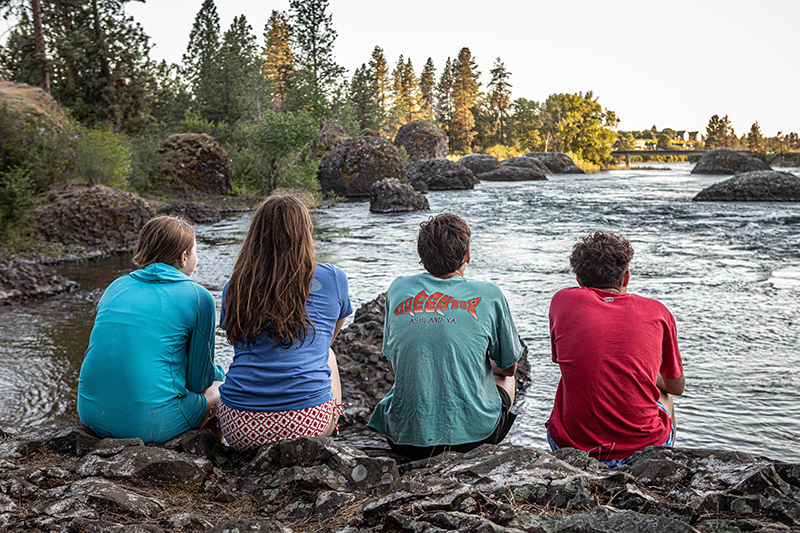By Katelyn Scott
Cover photo courtesy of Barbara Chase Fine Art Photography
Spokane Riverkeeper is on the water, in the spreadsheets and in the halls of government using science and community power to protect the Spokane River. Since our founding in 2009 by a small group of lawyers frustrated with unchecked pollution, we’ve combined hands-on river work with relentless advocacy to protect the river for everyone.
At the heart of our approach is a model that combines science with community engagement, turning volunteer-collected data into real-world policy impact. Volunteers gather water samples, track pollution, and submit data that actually influences state policy. For example, our community-collected data helped the state officially recognize the impairment caused by Hangman Creek sediment pollution in the Spokane River.

Photo courtesy of Barbara Chase Fine Art Photography
Now we’re applying that same model to tackle trash in the river, turning observations into actionable solutions that make the river cleaner and safer for everyone. Some threats, like PFAS, or “forever chemicals,” require specialized equipment and labs, but the principle is the same: informed, engaged communities are a powerful force for protecting clean water.
The Spokane River thrives when people show up. By volunteering with Spokane Riverkeeper, you don’t just collect trash or data; you join a movement that turns knowledge into action, holds polluters accountable, and defends the river for generations to come. Our approach shows that protecting clean water isn’t just about science. It’s about people coming together for the river.
The post Turning Science into Action: How the Community Protects the Spokane River appeared first on Out There Outdoors.
Cover photo courtesy of Barbara Chase Fine Art Photography
Spokane Riverkeeper is on the water, in the spreadsheets and in the halls of government using science and community power to protect the Spokane River. Since our founding in 2009 by a small group of lawyers frustrated with unchecked pollution, we’ve combined hands-on river work with relentless advocacy to protect the river for everyone.
At the heart of our approach is a model that combines science with community engagement, turning volunteer-collected data into real-world policy impact. Volunteers gather water samples, track pollution, and submit data that actually influences state policy. For example, our community-collected data helped the state officially recognize the impairment caused by Hangman Creek sediment pollution in the Spokane River.

Photo courtesy of Barbara Chase Fine Art Photography
Now we’re applying that same model to tackle trash in the river, turning observations into actionable solutions that make the river cleaner and safer for everyone. Some threats, like PFAS, or “forever chemicals,” require specialized equipment and labs, but the principle is the same: informed, engaged communities are a powerful force for protecting clean water.
The Spokane River thrives when people show up. By volunteering with Spokane Riverkeeper, you don’t just collect trash or data; you join a movement that turns knowledge into action, holds polluters accountable, and defends the river for generations to come. Our approach shows that protecting clean water isn’t just about science. It’s about people coming together for the river.
The post Turning Science into Action: How the Community Protects the Spokane River appeared first on Out There Outdoors.
